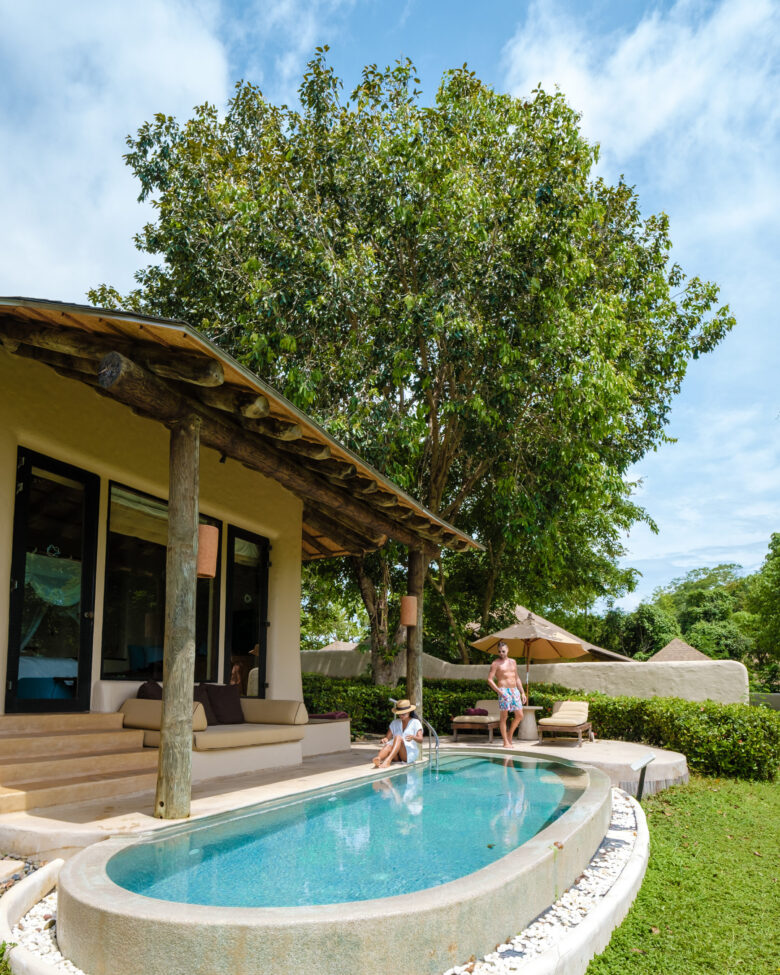Fiberglass pools have revolutionized the concept of residential and commercial swimming pools, offering sleek designs, rapid installation, and minimal maintenance. As they continue to gain popularity, a frequent question arises: “How large can a fiberglass pool be?” This inquiry delves into the heart of fiberglass pool capabilities, exploring the nuanced aspects of size options and inherent limitations. Through a detailed examination, this article aims to provide a comprehensive understanding of the scope and scale at which fiberglass pools can be customized to meet diverse needs.
Contents
- Understanding Fiberglass Pool Fabrication
- The Standard Size Range
- Pushing the Boundaries: Larger Fiberglass Pools
- Limitations Imposed by Transportation
- On-Site Installation Constraints
- Customization and Modular Designs
- Engineering and Structural Considerations
- The Future of Fiberglass Pool Sizes
- Balancing Size with Practicality
- Navigating Local Regulations and Environmental Impact
- The Role of Landscape Integration in Pool Size Decisions
- Making an Informed Decision
Understanding Fiberglass Pool Fabrication
To grasp the size limitations and options of fiberglass pools, it’s essential to start at the core—fabrication. Fiberglass pools are manufactured off-site in controlled environments, ensuring consistent quality and finish. This process involves layering fiberglass and resin into pre-designed molds, which dictate the pool’s shape, size, and contours. The fabrication technique is a double-edged sword; it ensures rapid installation and high quality but also imposes certain restrictions on size and customization.

Source: freepik.com
The Standard Size Range
Fiberglass pools are available in a myriad of sizes, catering to various preferences and spatial constraints. Whether you’re looking to get a fiberglass pool in Charleston SC or elsewhere, typically, the length ranges from 20 to 40 feet, with widths spanning 10 to 16 feet. Depths can vary, offering shallow play areas and deeper sections for diving, usually not exceeding 8 feet. This standard range encompasses the majority of residential needs, from compact pools for urban backyards to more expansive designs suitable for larger estates.
Pushing the Boundaries: Larger Fiberglass Pools
Manufacturers are continually pushing the boundaries of what’s possible with fiberglass pools. Innovations in manufacturing and transportation have seen the emergence of larger pools, some extending up to 50 feet in length. These larger models are often segmented into multiple pieces that are assembled on-site, a technique that somewhat circumvents transportation challenges. However, these larger pools are less common due to increased costs and logistical complexities.
Limitations Imposed by Transportation
One of the most significant constraints on fiberglass pool size is transportation. Pools are transported from the manufacturing facility to the installation site via road, which imposes size restrictions based on highway regulations and the capabilities of transport vehicles. Oversized loads require special permits, escorts, and can only travel during specific times, all of which contribute to the cost and complexity of delivering larger pools.

Source: freepik.com
On-Site Installation Constraints
Beyond transportation, the installation site itself can impose limitations on pool size. Access to the backyard or designated area must be wide enough to accommodate the pool shell and the machinery required for installation. In urban areas or properties with limited access, this factor can significantly restrict the size of a fiberglass pool. Additionally, the installation process involves lifting the pool shell into place, which requires clear overhead space free from power lines and other obstructions.
Customization and Modular Designs
While traditional fiberglass pools come in pre-defined shapes and sizes, manufacturers offer a degree of customization through modular designs. These designs allow for the combination of multiple fiberglass sections to create larger or more complex pool layouts. This modular approach offers a middle ground, expanding the possibilities beyond standard sizes while maintaining the benefits of fiberglass construction.
Engineering and Structural Considerations
As fiberglass pools increase in size, engineering and structural considerations become more critical. The pool shell must maintain its integrity and withstand the pressures exerted by water and the surrounding soil. Larger pools require more sophisticated engineering to prevent issues such as bulging, cracking, or shifting. These considerations often necessitate additional reinforcements, which can affect the pool’s design and cost.

Source: freepik.com
The Future of Fiberglass Pool Sizes
Advancements in materials science and manufacturing technology hold promise for the future of fiberglass pool sizes. Innovations such as stronger fiberglass composites and more flexible manufacturing techniques may further expand the size limitations. Moreover, improved transportation methods and on-site assembly technologies could make larger fiberglass pools more accessible and affordable.
Balancing Size with Practicality
When considering a large fiberglass pool, it’s essential to balance the desire for size with practical considerations. Maintenance requirements, heating costs, and water chemistry management all scale with pool size. A larger pool may offer more space for swimming and entertainment, but it also demands more in terms of upkeep and operational costs.
Local building codes and environmental regulations play a pivotal role in determining the feasible size and design of a fiberglass pool. These regulations are designed to ensure safety, protect the environment, and maintain community standards. Before embarking on a pool installation project, it’s crucial to understand the local requirements, which can include setbacks from property lines, maximum impervious surface ratios, and conservation considerations, especially in ecologically sensitive areas. Navigating these regulations early in the planning process can prevent costly revisions and ensure that the pool complies with all legal requirements.

Source: freepik.com
The Role of Landscape Integration in Pool Size Decisions
Integrating a pool into the existing landscape not only enhances its aesthetic appeal but can also influence the size and shape of the pool. A well-designed pool should complement the surrounding environment, taking into account the topography, existing vegetation, and overall landscape design. This integration might lead to creative solutions that optimize the use of space and natural features, potentially affecting the pool’s dimensions. Landscape architects and pool designers can offer valuable insights, suggesting ways to harmonize the pool with the landscape while maximizing functionality and visual impact.
Making an Informed Decision
Choosing the right size for a fiberglass pool involves weighing multiple factors, including the available space, budget, intended use, and maintenance capabilities. Potential pool owners should consult with manufacturers and installation professionals to understand the possibilities and limitations specific to their situation. Detailed planning and consultation can ensure that the chosen pool size aligns with expectations and practicalities.
Conclusion
The size of a fiberglass pool is influenced by a complex interplay of factors, from manufacturing and transportation limitations to on-site installation constraints. While the standard size range meets most needs, there are options for those seeking larger pools, albeit with additional complexities and costs. Innovations in technology and design continue to push the boundaries, gradually expanding the scope of what’s possible with fiberglass pools. Ultimately, the decision on pool size should be informed by a careful consideration of desires, practicalities, and expert advice, ensuring that the chosen pool brings lasting enjoyment and value.
